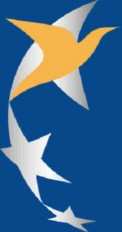Thu, Feb 02, 2012
Letter Sent To EASA Board Of Management "Expressing Concern"
Over GA Fee Structure
The entire aviation world has mounted a concerted challenge to
EASA over its scale of fees and charges, which are characterised as
inexplicably high and are acting as a major drag on the aviation
industry in Europe. IAOPA has joined organizations representing
every facet of regulated aviation on the EASA Advisory Body in
writing to the Chairman of the EASA Board of Management expressing
concern at the damaging effect of EASA’s fees.

The letter singles out for special attention the wholly
disproportionate charges levied on general aviation and demands
that they be reduced through a program of cost-cutting at
EASA.
The text of the letter, addressed to Mike Smethers, Chairman of the
EASA Board of Management, has been agreed by organizations as
diverse as Airbus, the International Air Transport Association, the
Association of European Airlines, Rolls Royce and the European
Business Aviation Association as well as IAOPA. It indicates that
EASA’s overheads are running out of control at a time when
economies of scale should be bringing them down and points out that
EASA’s labour charge – €246.38 per hour – is
wholly out of scale with labour costs in the industry and twice as
high as those of other aviation regulators. It also calls on Europe
to accept more bilateral agreements which mean EASA would not spend
money re-certificating equipment which has already been acceptably
certificated by third countries.
Martin Robinson, who represents IAOPA on the EASA Advisory Body
which agreed the text of the letter, says: “We are
particularly gratified that our colleagues in the airline world, in
aviation manufacturing and in other areas which have up to now not
identified closely with general aviation are united on this issue.
This makes it very difficult for EASA and the European Commission
to ignore. From GA’s standpoint, we have always said that
none of EASA’s major overheads – big offices, large
staffs – would be necessary at all if the organization
existed solely for the regulation of GA, so it is unfair that GA
should be forced to pay such significant sums towards those
overheads.”

The letter, signed by Vincent De Vroey, Chairman of the EASA
Advisory Board, also calls on EASA to negotiate more bilateral
agreements with third-country regulators in order to ensure that it
is not spending time and money certifying equipment which has been
adequately certificated elsewhere. In addition, it says,
duplication of duties and costs between EASA, Eurocontrol and
national aviation authorities needs to be tackled.
With specific regard to general aviation it says: "Last but not
least, the EAB would like to re-iterate its concern on the high
level of EASA fees for general aviation which are unaffordable for
this kind of activity. We believe that the EASA fees for general
aviation should be reduced through a complete review of EASA costs,
rules, procedures and structures related to general aviation in
order to make the fees more proportionate for those kind
activities. However, we disagree with cross-subsidies between
different kind of activities since we believe EASA fees should be
linked to proportionate costs linked to the actual certification
activity."
More News
Witness Reported The Airplane Was Flying Low And Was In A Left Bank When It Struck The Power Line Analysis: The pilot was on final approach to land when the airplane collided with >[...]
How To Get A Story On Aero-TV News/Feature Programming How do I submit a story idea or lead to Aero-TV? If you would like to submit a story idea or lead, please contact Jim Campbel>[...]
From 2012 (YouTube Edition): A Segment Of The Sport Aviation World That Truly Lives "Low And Slow" Pity the life of ANN's Chief videographer, Nathan Cremisino... shoot the most exc>[...]
Aero Linx: International Business Aviation Council (IBAC) IBAC promotes the growth of business aviation, benefiting all sectors of its industry and in all regions of the world. As >[...]
Execute Missed Approach Instructions issued to a pilot making an instrument approach which means continue inbound to the missed approach point and execute the missed approach proce>[...]
 NTSB Final Report: Cozy Cub
NTSB Final Report: Cozy Cub ANN FAQ: Contributing To Aero-TV
ANN FAQ: Contributing To Aero-TV Classic Aero-TV: Seated On The Edge Of Forever -- A PPC's Bird's Eye View
Classic Aero-TV: Seated On The Edge Of Forever -- A PPC's Bird's Eye View ANN's Daily Aero-Linx (04.29.25)
ANN's Daily Aero-Linx (04.29.25) ANN's Daily Aero-Term (04.29.25): Execute Missed Approach
ANN's Daily Aero-Term (04.29.25): Execute Missed Approach




